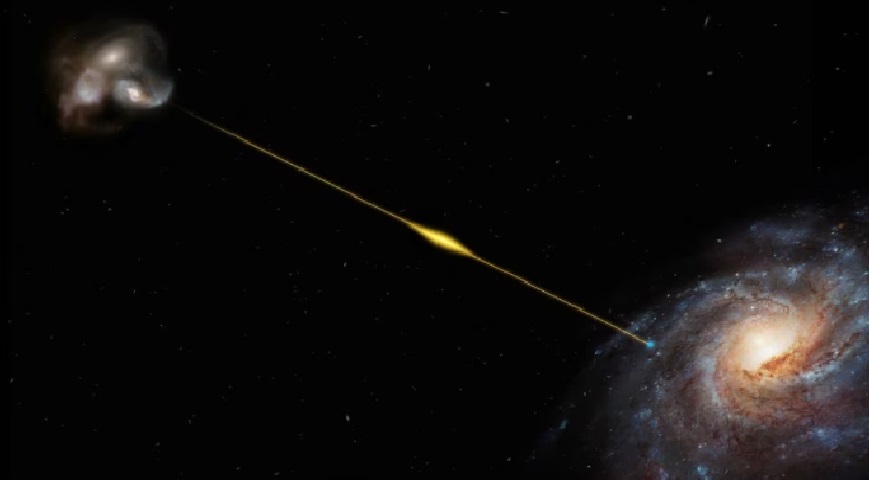Astronomers have identified a powerful surge of radio waves emanating from what appears to be a collision of galaxies dating back approximately 8 billion years - marking the earliest known occurrence of an enigmatic event known as a fast radio burst, which remains a scientific puzzle.
In a fraction of a millisecond, this burst discharged an amount of energy equivalent to what our sun emits in three decades, according to researchers. The detection was made possible through the use of the Australian SKA Pathfinder, a radio telescope situated in Western Australia. Its precise location was determined by the European Southern Observatory's Very Large Telescope in Chile, one of the most advanced optical telescopes in operation.
A fast radio burst, abbreviated as FRB, is a brief emission of radio-frequency electromagnetic radiation. Despite its fleeting duration, it surpasses the radiance of many other celestial sources of radio waves. It's worth noting that radio waves possess the longest wavelengths within the electromagnetic spectrum.
Did you read this?
"The radio waves in FRBs are similar to those used in microwave ovens. The amount of energy in this FRB is the equivalent to microwaving a bowl of popcorn twice the size of the sun," said astronomer Ryan Shannon of Swinburne University of Technology in Australia, co-leader of the study published this week in the journal Science.
Previously, the earliest known instance of such a burst was dated back to 5 billion years ago, making this discovery 3 billion years older. It's important to note that the universe itself is approximately 13.8 billion years old, while Earth is estimated to be about 4.5 billion years old. As astronomers observe objects and phenomena from epochs long past, they gaze across immense cosmic expanses. In this context, this particular burst stands out as the most distant among all FRBs ever identified.
"We now know that fast radio bursts have been around for more than half the age of the universe," said astronomer and study co-leader Stuart Ryder of Macquarie University in Australia.
The discovery of fast radio bursts took place in 2007.
"The most likely source is a hyper-magnetized neutron star, called a magnetar. These stars are stellar corpses the mass of the sun but only the size of a small city. They are some of the most extreme objects in the universe, which you would need to produce such extreme bursts," Shannon said.
"There are more energetic events in the universe, associated with stellar explosions or a black hole shredding a star apart. But FRBs are unique in that they produce all their energy in radio waves, with nothing seen in other bands - optical light or X-rays for example - and that the signals are so short," Shannon added.
Shannon also noted that they are more prevalent, with estimates suggesting that over 100,000 of these events may take place somewhere in the universe every day. However, far fewer have been observed and, as Shannon pointed out, only about 50 of them, including this one, have been successfully linked back to the specific galaxy from which they originated.
"Galaxies in the distant universe look different than those nearby - they don't have nice spiral arms - so it wasn't clear if what we were seeing was one galaxy with a few clumps, or a few smaller galaxies. It is likely that the source is a few galaxies, possibly merging," Shannon said.
The researchers explained that investigating these bursts can also aid in the detection and measurement of the vast amount of matter believed to fill the vast spaces between galaxies. As these radio waves traverse the cosmos, they have the capacity to signal the existence of intergalactic plasma - a form of extremely hot gas where some or all of its atoms have split into subatomic particles, specifically electrons and ions.
"Most of the normal matter in the universe - this is the regular matter that makes up stars, planets, humans - is thought to reside in a diffuse cosmic web of gas between galaxies," Shannon said. "People have been searching for this matter for decades using other techniques. Because it is so diffuse, it is nearly invisible in any other way, so was considered 'missing.'"









